Would you like to add DNS records for your WP Mail SMTP mailer setup with your domain hosted on SiteGround? Adding the DNS records provided by your mailer helps with domain verification and improves email deliverability.
In this guide, we’ll walk you through the process of adding DNS records for WP Mail SMTP on SiteGround.
In This Article
Before getting started, make sure WP Mail SMTP is installed and activated on your WordPress site.
Understanding How DNS Records Work in SMTP
The Domain Name System (DNS) is like the internet’s address book. DNS provides a means to map a domain name (e.g., example.com) to its corresponding IP address (e.g., 123.123.80.20). Just like how you store a person’s phone number with their name on your smartphone to easily remember them.
DNS records act as a storage system for the settings needed to map a domain name to its corresponding IP address. This means each domain has its unique set of DNS records.
Most mailers in WP Mail SMTP use DNS records as a means to verify your domain on their platform. In some cases, it can be used to improve email deliverability, as in the case of adding SPF, DKIM, and DMARC records.
In the next sections, we’ll cover the steps for adding DNS records for sites hosted on SiteGround.
Accessing DNS Settings in SiteGround
To start, log in to your SiteGround hosting dashboard.
After logging in to your hosting dashboard, click on Websites in the navigation bar.

On the next page, you’ll see a list of your domains hosted on SiteGround. Click the SITE TOOLS button under the domain you’d like to add the DNS records.

This will bring you to the dashboard for the selected domain. From here, select Domain from the sidebar menu.
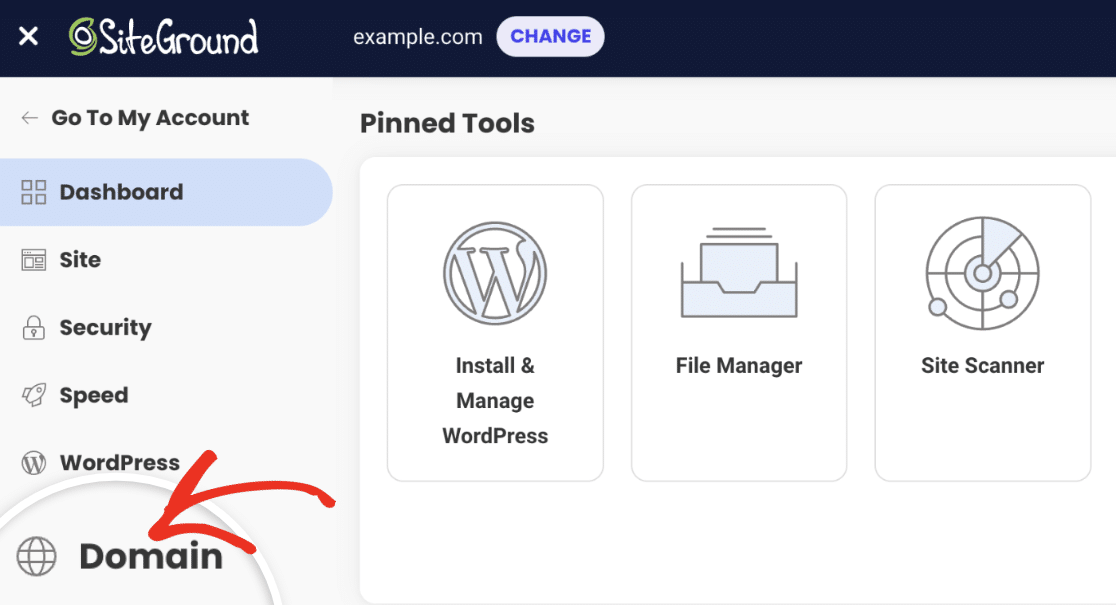
After that, select DNS Zone Editor from the list of options that appear.
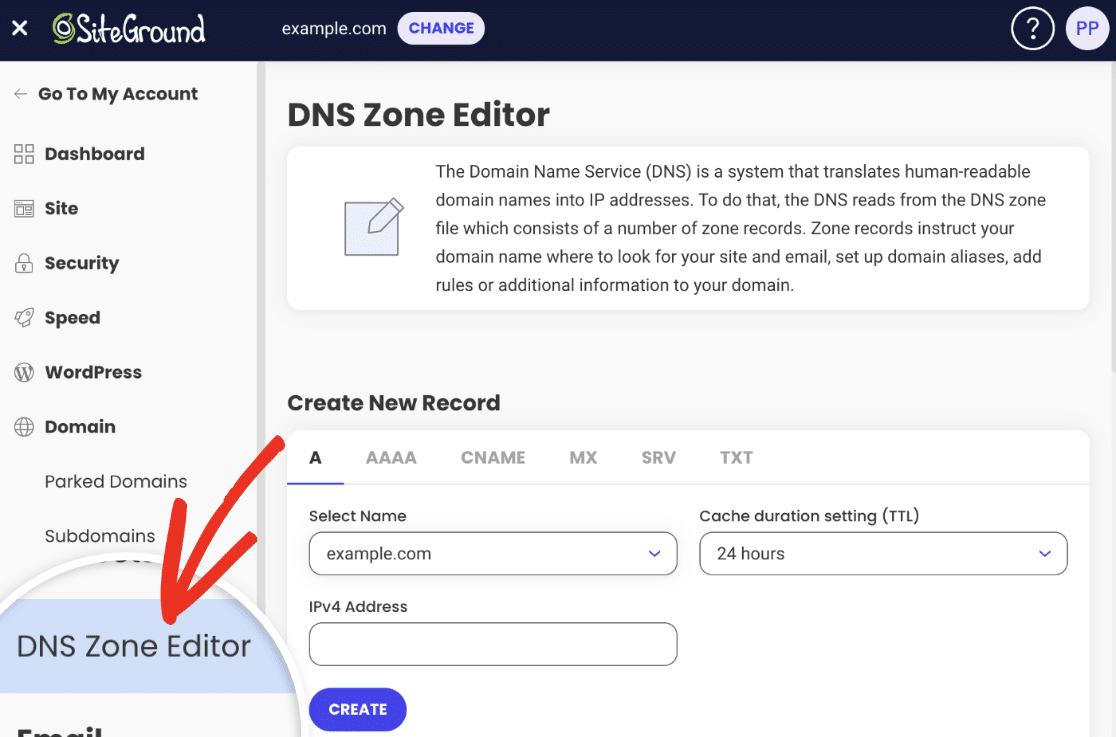
This will take you to the DNS Zone Editor page where you can add new DNS records and manage existing ones.
Adding DNS Records in SiteGround
Under the Create New Record section, you’ll see options to add A, AAAA, CNAME, MX, SRV, or TXT records. You’ll need to choose the specific record required by your mailer.
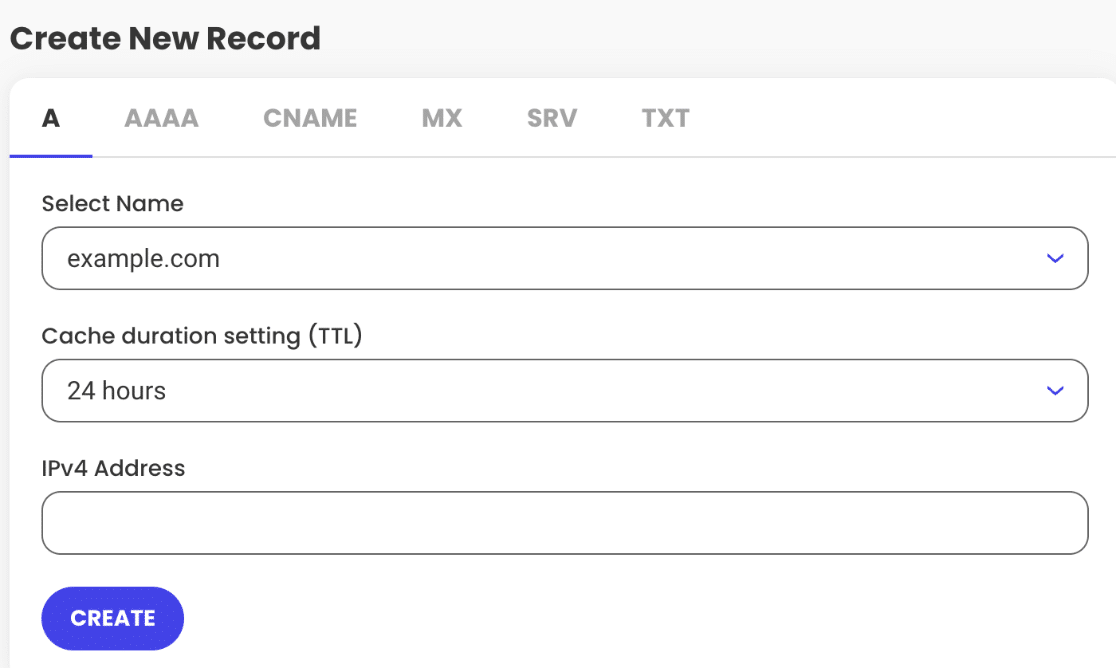
As an example, we’ll add one of the CNAME records SendLayer provides when setting it up with WP Mail SMTP.
To do so, select the CNAME option from the list of DNS record types in SiteGround.
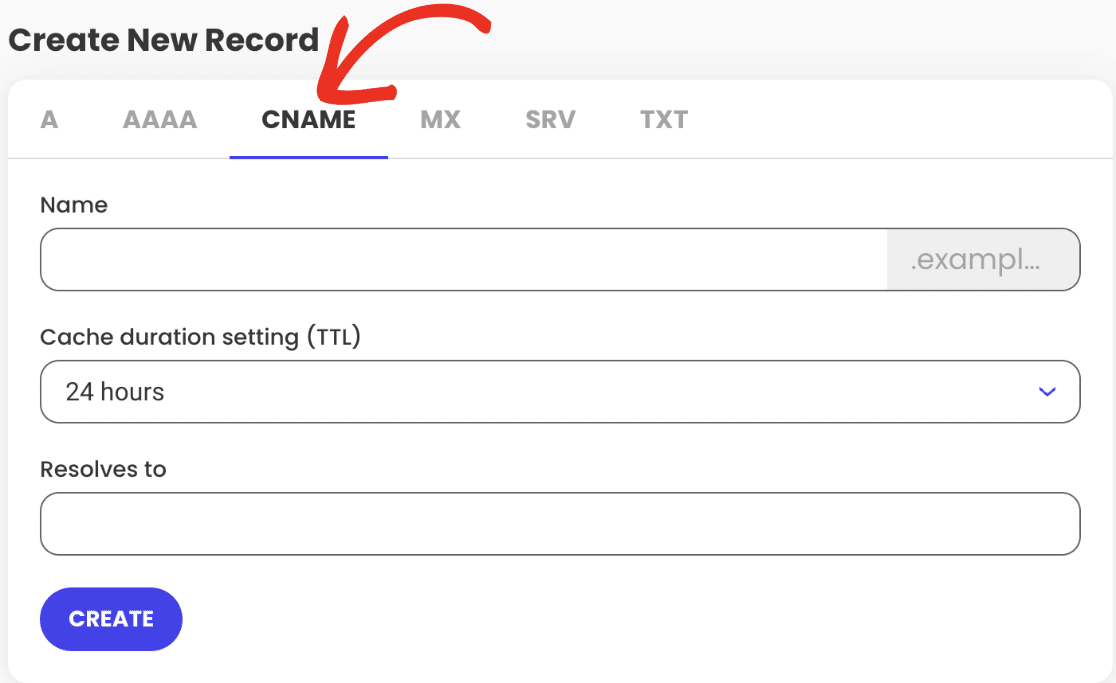
After that, enter the SendLayer Hostname into the Name field in SiteGround.
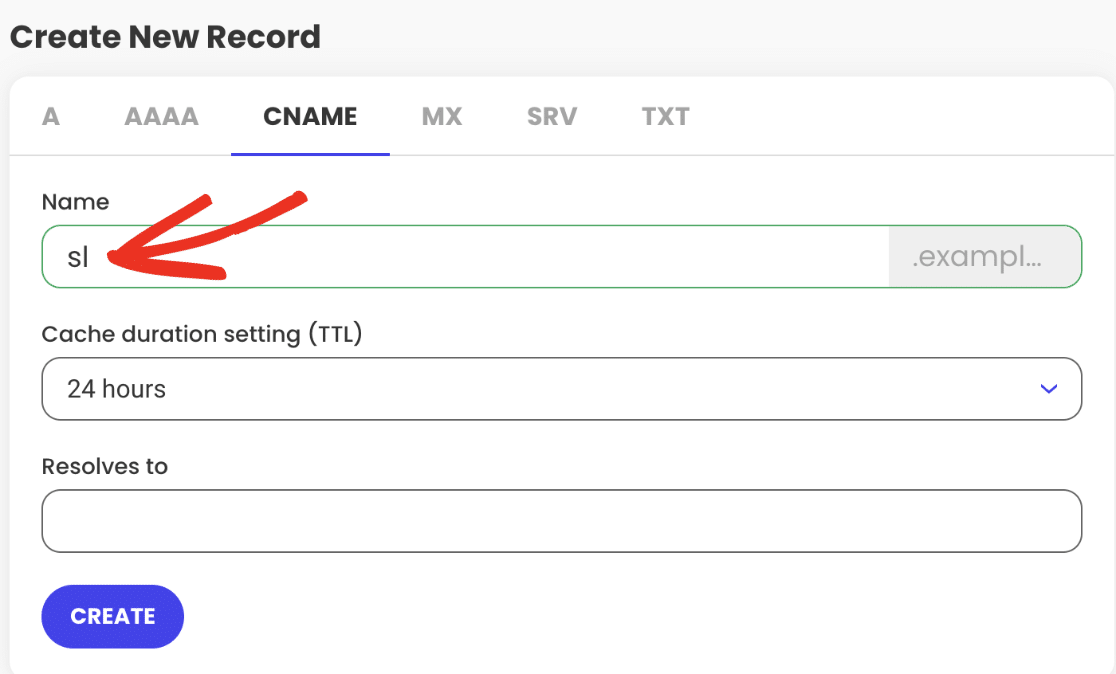
Note: When adding DNS records, be aware that the naming for the fields from your mailer or domain host might differ. For instance, a field labeled as “Name” in one interface might appear as “Host Record” or “Hostname” in another. Always refer to your host or mailer’s documentation to understand their specific terminology.
For the TTL (Time To Live), select 5 min from the Cache duration settings (TTL) dropdown.
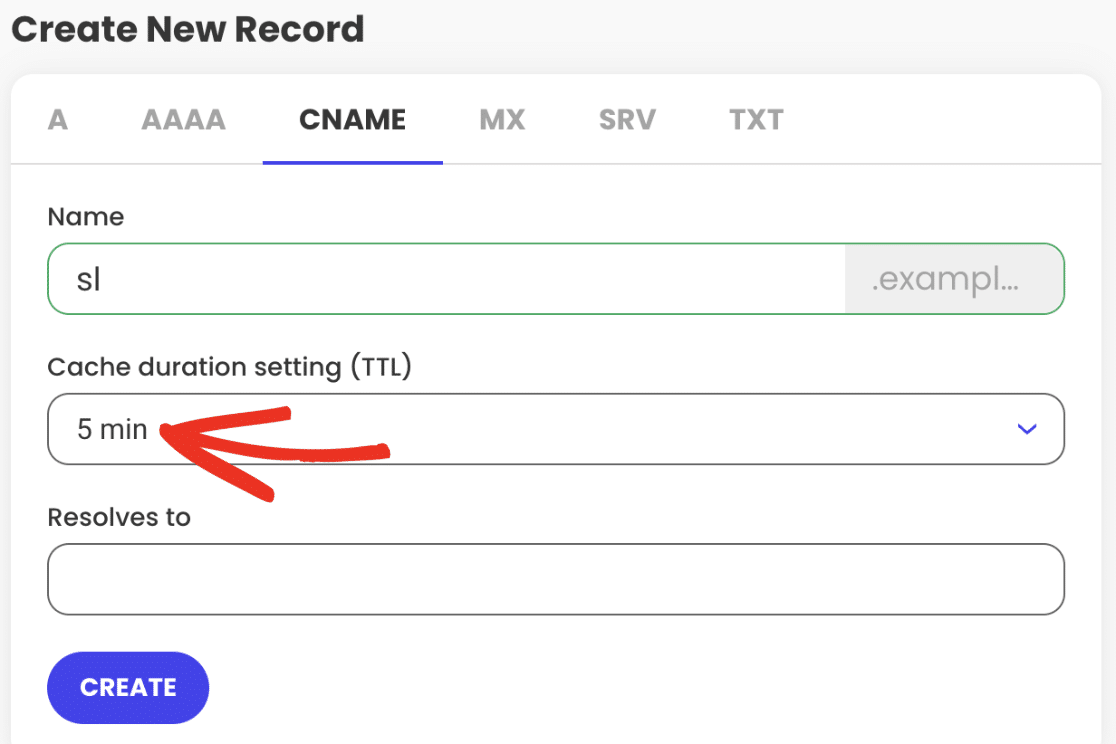
Note: The TTL value may differ depending on your chosen mailer or the record type. Be sure to enter the correct value provided by your mailer.
Next, add the SendLayer Value to the Resolves to field.
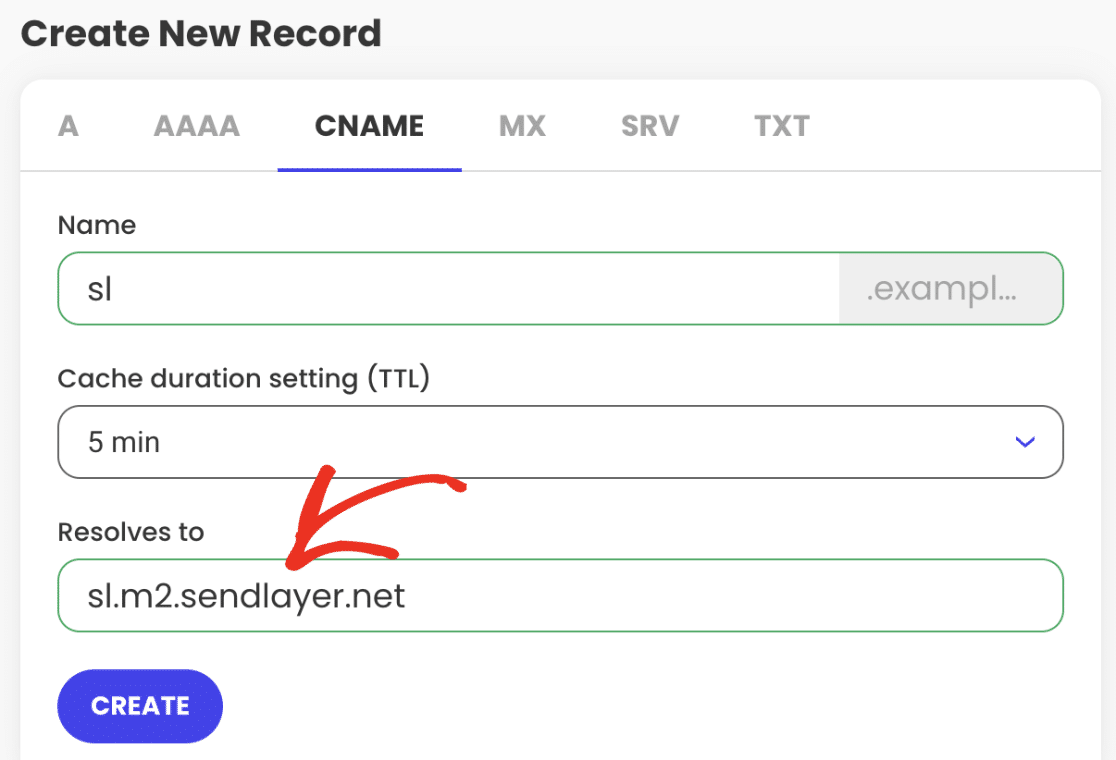
Once you’ve added the details for the DNS record, go ahead and click the CREATE button.
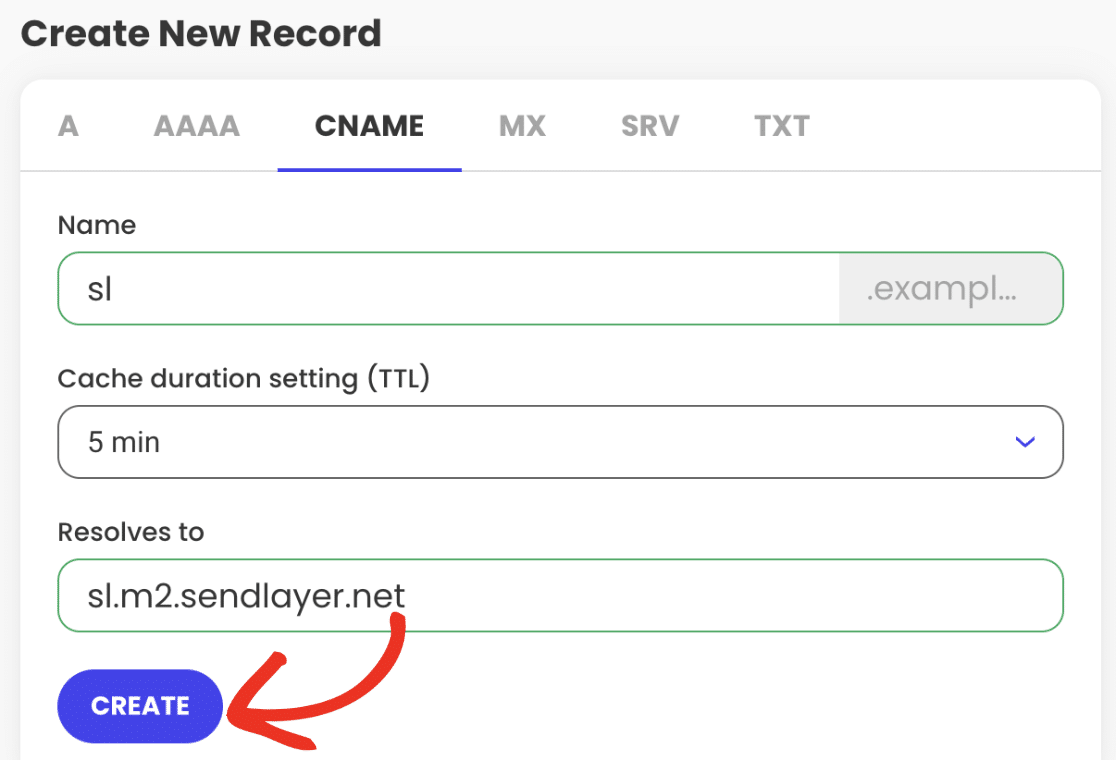
After adding the first record, repeat the steps above to add the remaining DNS records provided by your mailer.
Note: It can take up to 24-48 hours for DNS changes to propagate.
Verifying Your DNS Records
Once you’ve added the DNS records to support WP Mail SMTP, we recommend verifying that they’ve been implemented correctly. This step helps ensure optimal email deliverability by confirming that your outgoing emails are authenticated.
There are a couple of ways to verify your DNS records:
- Sending a test email: Utilize WP Mail SMTP’s built-in tool for sending a test email. If there’s an issue with your DNS records, an error notification will pop up.
- Using the Site Health tool: The WordPress Site Health tool can help identify any DNS verification problems. If there’s a verification issue with your DNS records, you’ll see a message that provides actions you can take to help resolve it.
To learn more about using these tools, be sure to check out our complete guide to verifying your DNS records.
Note: Remember, changes to DNS settings might take up to 48 hours to fully propagate. If you’ve made recent updates, giving it a little more time before troubleshooting might be worthwhile.
That’s it! Now you know how to add DNS records on domains hosted with SiteGround.
Next, would you like to conditionally send emails using different mailer connections on your WordPress site? See our smart routing tutorial to learn how to set it up.
